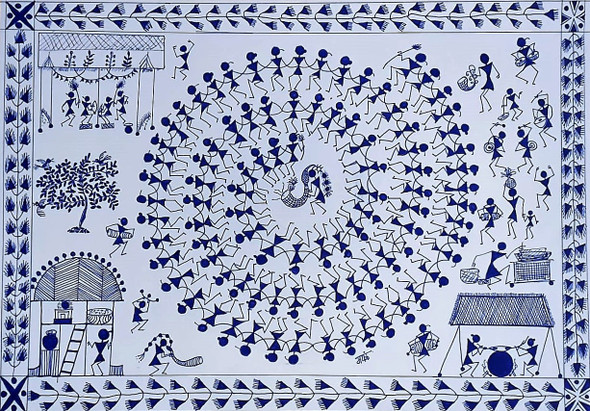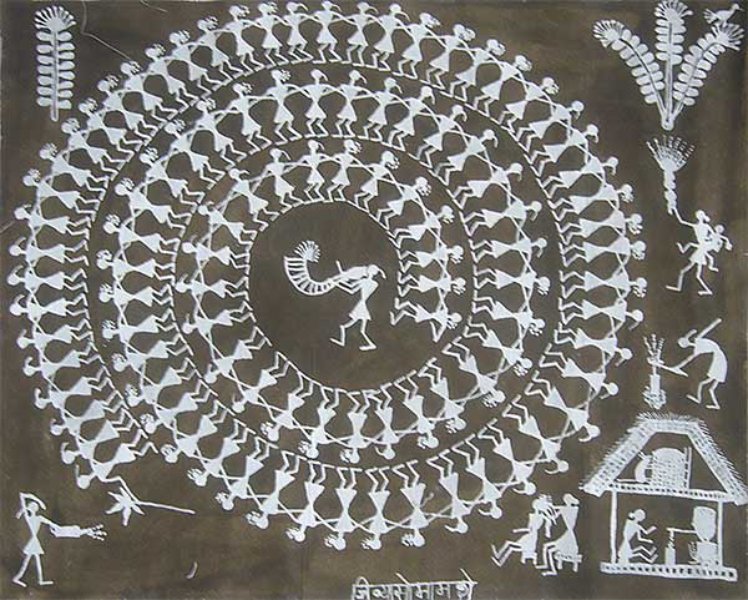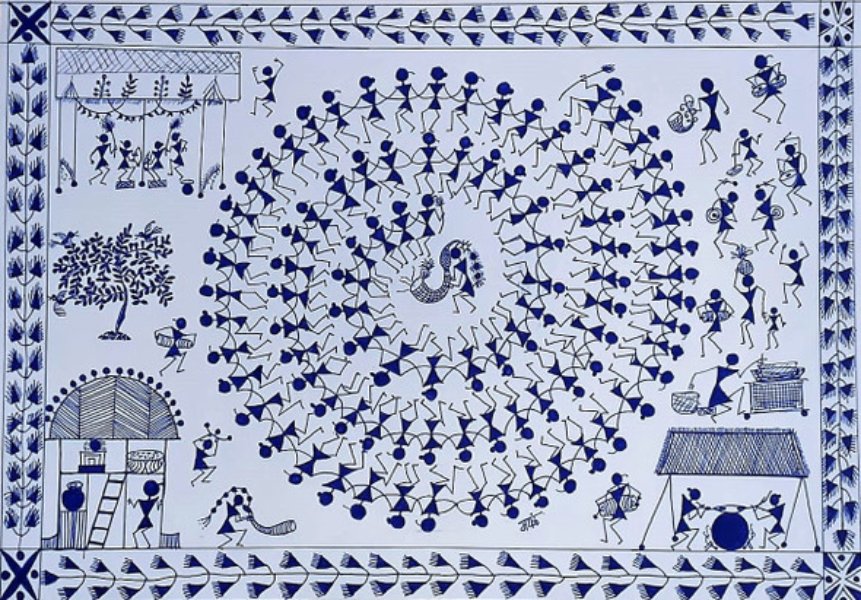
Themes
tribal paintings
Gujarat’s Warli painting , gujarat

The Warli paintings constitute a traditional art in Gujarat by the Warli tribes. Their style is quite simple yet highly expressive; their subjects include the usually mundane scenes in life, nature, animals, and tribal rituals. Warli paintings are done in white with pigment on mud or red ochre backgrounds emphasizing geometric shapes such as circles, triangles, and squares. Tarpa paintings describe much about communal life with depictions of their dances, harvests, and spiritual beliefs. In this way, nature forms the matrix of existence for the Warlis and is an important aspect of their cultural heritage.

The tools and materials used for Warli paintings are mostly natural and simple. Predominantly they use rice paste, which is to be smeared with mud walls to obtain a white pigment. The tools used are twigs, bamboo, and sticks of babul. These tools are used to make fine lines and elaborate designs. They do lipan with mud, cow-dung on walls, providing a natural, earthen backdrop. This minimalist approach highlights the harmony between the tribe's art and their environment. They paint on that wall lots of different figures.

Symbols in Warli paintings carry profound spiritual and cultural meanings. The circle is a symbol of the sun, the moon, and the cycle of life. The triangle are said to represent mountains or rooftops as protection and stability; squares represent earth; straight lines may symbolize paths or directions of life. The animals, trees, and human forms from Warli art symbolize the relationship of human beings with all of nature, thus enforcing the concept of harmony and balance. These symbols speak for the world view of the tribe where whatever happens in this life is somehow interlinked together.

